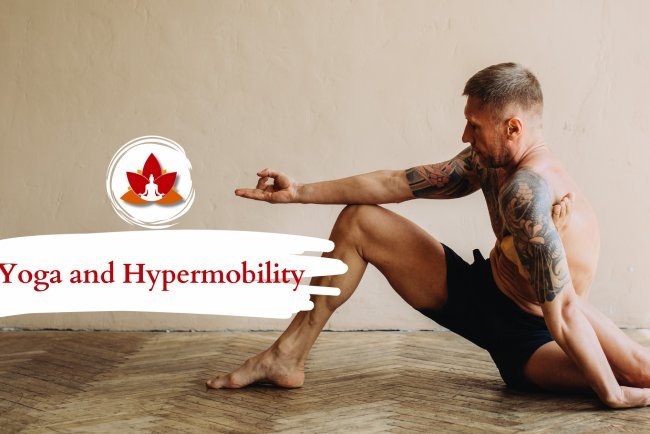What is the Stretch Reflex? 5 Techniques to Calm the Stretch Reflex

The stretch reflex, also known as the myotatic reflex, is an involuntary muscular contraction that occurs when a muscle is suddenly stretched. It's an automatic protective mechanism designed to prevent overstretching and muscle damage.
How the Stretch Reflex Works
When a muscle stretches too quickly, sensory receptors called muscle spindles detect the change in length. These spindles send a signal to the spinal cord, which then sends an immediate response to contract the muscle. This contraction is the body’s way of preventing injury.
The Purpose and Importance of the Stretch Reflex
-
Protects muscles and tendons from tears.
-
Maintains posture and balance.
-
Enhances stability during sudden movements.
When the Stretch Reflex Becomes a Problem
While it's a safety mechanism, an overactive stretch reflex can limit flexibility and cause discomfort. This is especially problematic in activities like yoga, dance, or athletics where deep stretching is essential.
The Science Behind Muscle Stretching
Role of Muscle Spindles and Golgi Tendon Organs
-
Muscle Spindles: Detect sudden changes in muscle length, triggering the stretch reflex.
-
Golgi Tendon Organs (GTO): Located at the muscle-tendon junction, these receptors detect tension and can cause the muscle to relax if tension is too high.
Neurological Triggers of the Stretch Reflex
-
Rapid or forced stretching sends signals to contract the muscle.
-
Slow, mindful stretching reduces the response of the muscle spindles, helping the muscle relax.
Common Signs of an Overactive Stretch Reflex
-
Persistent tightness during stretching.
-
Feeling of the muscle "fighting back" against the stretch.
-
Increased muscle tension leading to soreness.
-
Limited progress in flexibility training.
-
Risk of strains and minor injuries.
5 Proven Techniques to Calm the Stretch Reflex
1. Adaptation Method – Hold Still Until Nerves Quiet
This gentle technique uses the nervous system’s natural adaptation to reduce the stretch reflex.
Steps:
-
Move into a mild, pleasant stretch—never painful.
-
Stay completely still until the sensation of stretch fades.
-
Move deeper slightly, just enough to bring back the same mild stretch sensation.
-
Repeat the process.
Benefits:
-
Safe for beginners.
-
Excellent for sensitive nervous systems.
-
Promotes gradual flexibility gains.
2. Reciprocal Inhibition – Contract Antagonist Muscles
This technique uses the body’s natural wiring—when one muscle contracts, its opposite tends to relax.
Steps:
-
Enter a moderate stretch.
-
Contract the antagonist muscle group (e.g., quadriceps if stretching hamstrings) without moving the bones.
-
As the target muscle releases, gently move deeper.
-
Repeat as needed.
Benefits:
-
Quick reduction in muscular resistance.
-
Enhances stability and control.
3. PNF – Contract, Then Release Stretching Muscle
Proprioceptive Neuromuscular Facilitation (PNF) is a highly effective method often used in physical therapy.
Steps:
-
Create a strong stretch in the target muscle.
-
Isometrically contract the stretched muscle for 5 to 30 seconds.
-
Relax the contraction.
-
Move deeper into the stretch.
-
Repeat.
Benefits:
-
Improves both flexibility and strength.
-
Supported by extensive scientific research.
4. Controlled Release – Contract Both Stretching and Opposing Muscles
This advanced technique teaches the nervous system to release tension while maintaining stability.
Steps:
-
Move into a moderate stretch.
-
Simultaneously contract the stretching muscle and its antagonist (e.g., iliopsoas and gluteus maximus).
-
Gradually increase antagonist contraction, pulling bones deeper while maintaining tension in the stretching muscle.
-
Repeat.
Benefits:
-
Excellent for building strength and mobility together.
-
Provides deep, safe releases.
5. Anticipatory Release – Let Go Before Stretch Occurs
A mind-body technique based on mental mapping of tension.
Steps:
-
Move partially into a stretch until tension appears.
-
Mentally map the areas of tightness.
-
Ease out until the stretch sensation disappears.
-
Using your map, anticipate the tight spots and consciously relax them as you move back in.
-
Repeat, creating a new map each time.
Benefits:
-
Deepens mind-body awareness.
-
Reduces habitual tension patterns.
Conclusion
The stretch reflex is an essential part of your body's safety system but can become an obstacle when flexibility is your goal. The 5 techniques to calm the stretch reflex—Adaptation, Reciprocal Inhibition, PNF, Controlled Release, and Anticipatory Release—offer safe, effective ways to bypass this reflex and gain mobility with ease. Apply them consistently, with mindfulness and patience, for transformational results in your flexibility journey.
Frequently Asked Questions (FAQs)
1. What is the primary function of the stretch reflex?
It protects muscles from overstretching and injury by causing them to contract when stretched suddenly.
2. Is it safe to suppress the stretch reflex?
Yes, using gentle, controlled methods like those described helps reduce unnecessary reflex activation while maintaining safety.
3. How often should I practice these techniques?
2-4 times per week is ideal, but it varies depending on your body and fitness goals.
4. Can these techniques help with chronic tightness?
Absolutely. These methods retrain the nervous system, which is crucial for releasing chronic tension.
5. Are these methods suitable for beginners?
Yes, especially the Adaptation Method and Anticipatory Release, which are gentle and safe.
6. Should I consult a professional before starting?
If you have any medical issues, past injuries, or chronic pain, consulting a qualified health professional is recommended.
What's Your Reaction?


























